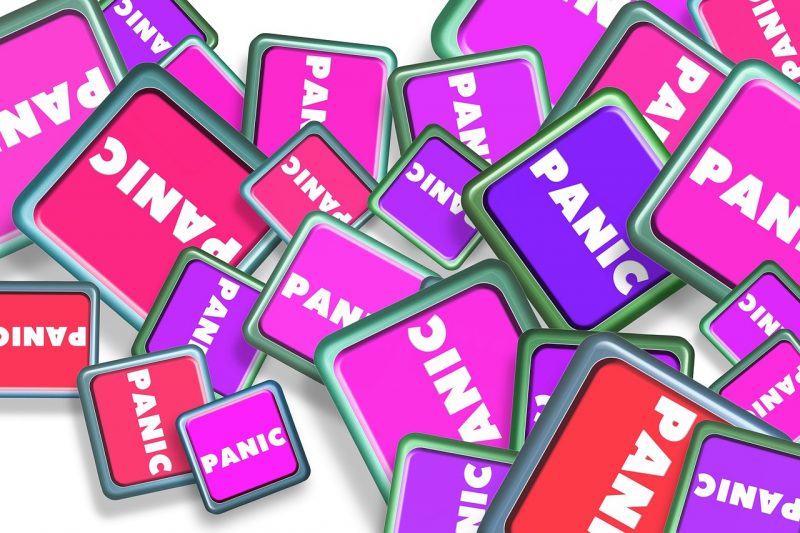The balance sheets of America’s banks are packed with bad loans and bad investments, and that is really bad news for all of us because the banks are the beating heart of our economic system. Without the loans that they provide, we would not even have a functioning economy. So the health of our banks is of paramount importance. Today, there are more than 4,000 banks in the United States, and maybe a few hundred of them could be considered healthy. Most of our banks fully understand that they are in really deep trouble, and they are feverishly trying to avoid the same fate as Silicon Valley Bank, Signature Bank and First Republic Bank. The following are 3 things that troubled U.S. banks are doing as they scramble to survive…
#1 Troubled U.S. Banks Are Dramatically Tightening Lending Standards
I warned my readers that a credit crunch would be coming, and that is precisely what we are witnessing.
According to one recent survey, Americans are being turned down for loans at staggering rates…
A new survey published by Bankrate found that 50% of loans or financial product applicants have been denied since the Fed started raising rates in March 2022.
Credit card applications have been rejected the most frequently, with 14% of Americans reporting that banks denied them a new credit card while another 6% were refused a balance transfer card. Others were denied a credit limit increase on their existing credit card (11%), a personal loan (10%), car loan or car lease (9%), insurance (8%) and a mortgage loan (5%).
Banks are tightening their lending standards in response to higher interest rates.
We haven’t seen anything like this since the Great Recession.
Unsurprisingly, those that have low credit scores are being denied loans most frequently…
The share of Americans who have been denied a loan or financial product is “substantially” higher for those with lower credit scores. For instance, about 73% of individuals with a “poor” credit score, ranging from 300 to 579, have been denied a loan or financial product, compared to 63% with “fair” credit, ranging from 580 to 669, and 55% with “good” credit, ranging from 670 to 739.
#2 Troubled U.S. Banks Are Closing Branches
This is a trend I have been tracking for a long time.
When banks get into trouble, they cut costs, and closing branches is one way to do that.
During the most recent week that we have data for, U.S. banks filed to close another 23 branches…
Banks filed to close 23 branches in a single week last month – with JPMorgan Chase alone announcing plans to shut 18 in California alone.
All but one of those branches were locations of First Republic Bank, the failed commercial bank and wealth manager it acquired last year.
#3 Troubled U.S. Banks Are Slashing Jobs
Conducting mass layoffs is another way that banks are cutting costs.
Last year, the biggest banks in the world collectively laid off more than 60,000 workers. That was the largest number that we have seen since the global financial crisis…
According to the FT’s calculations, 20 of the world’s largest lenders cut at least 61,905 jobs this year. It was one of the worst years for job cuts at banks since the 2007-2008 financial crisis, when banks eliminated 140,000 positions.
Aside from UBS, the second largest number of job cuts happened at Wells Fargo, which reduced its headcount by 12,000.
So far in 2024, the pace of banking layoffs far exceeds what we witnessed in 2023.
In fact, Citigroup alone has announced that it will be laying off 20,000 workers…
Citigroup will lay off 20,000 employees over the next two years, CFO Mark Mason said Friday. The reduction comes after the company reported a $1.8 billion net loss for the fourth quarter of 2023, its worst quarter in 15 years.
The bank expects the reduction in headcount to save $2.5 billion over the long-term.
A lot more banking layoffs are coming, and that is extremely unfortunate.
Shockingly, it is at this moment that the Federal Reserve has decided to terminate the program that has literally been keeping hundreds of U.S. banks from completely imploding…
The Federal Reserve on Wednesday said a funding lifeline created for banks last year after the collapse of Silicon Valley Bank threatened to spark a wider financial crisis would close as scheduled in March.
The Fed also raised the interest rate on new loans from the Bank Term Funding Program (BTFP) for the remainder of its life, effectively ending what had become a popular and profitable arbitrage opportunity for U.S. lenders, which analysts said should deter fresh borrowing.
The sun-setting of the program on March 11 had been signaled by Fed officials as fear in the banking system abated.
Circle March 11th on your calendar, because that is going to be a very important turning point.
I have no idea what the “experts” at the Fed are thinking.
Do they not understand what is going to happen?
Without artificial life support, a lot of these banks are going to go belly up.
In a recent opinion piece, Kevin O’Leary expressed his opinion that literally thousands of U.S. banks will fail during the next three to five years…
Regional banks are doomed.
That’s not necessarily a bad thing… if you’re prepared for it.
It’s been almost a year since Silicon Valley Bank (SVB) collapsed in March – the victim of idiotic management. But the sobering reality is the small banking crisis is far from over.
In the next three to five years, thousands more regional institutions will fail. That’s why I don’t have a dime saved or invested in a single one.
Will he be right?
I don’t know.
But what I do know is that lots of small and mid-size banks will fail unless the Federal Reserve props them up.
And once even a few banks start failing, that will cause a wave of panic to ripple throughout the entire system.
The people that are running things must surely understand this.
So what is their plan?
In recent years, whenever things have gotten bad they have always gotten out their firehoses and have started spraying money all over the place.
Will they do the same thing again once many small and mid-size banks begin to implode?
Interestingly, right now the price of gold is spiking dramatically.
Are some investors starting to hoard gold in anticipation of a new financial crisis?
I wish that I had all the answers.
But what seems clear is that big trouble is on the horizon, and those that are wise will position themselves accordingly.
Michael’s new book entitled “Chaos” is available in paperback and for the Kindle on Amazon.com, and you can check out his new Substack newsletter right here.
About the Author: Michael Snyder’s extremely controversial new book entitled “Chaos” is available in paperback and for the Kindle on Amazon.com. He has also written seven other books that are available on Amazon.com including “End Times”, “7 Year Apocalypse”, “Lost Prophecies Of The Future Of America”, “The Beginning Of The End”, and “Living A Life That Really Matters”. (#CommissionsEarned) When you purchase any of Michael’s books you help to support the work that he is doing. You can also get his articles by email as soon as he publishes them by subscribing to his Substack newsletter. Michael has published thousands of articles on The Economic Collapse Blog, End Of The American Dream and The Most Important News, and he always freely and happily allows others to republish those articles on their own websites. You can connect with Michael on YouTube, Facebook and Twitter, and sharing his articles on your own social media accounts is definitely a great help. These are such troubled times, and people need hope. John 3:16 tells us about the hope that God has given us through Jesus Christ: “For God so loved the world, that he gave his only begotten Son, that whosoever believeth in him should not perish, but have everlasting life.” If you have not already done so, we strongly urge you to invite Jesus Christ to be your Lord and Savior today.

